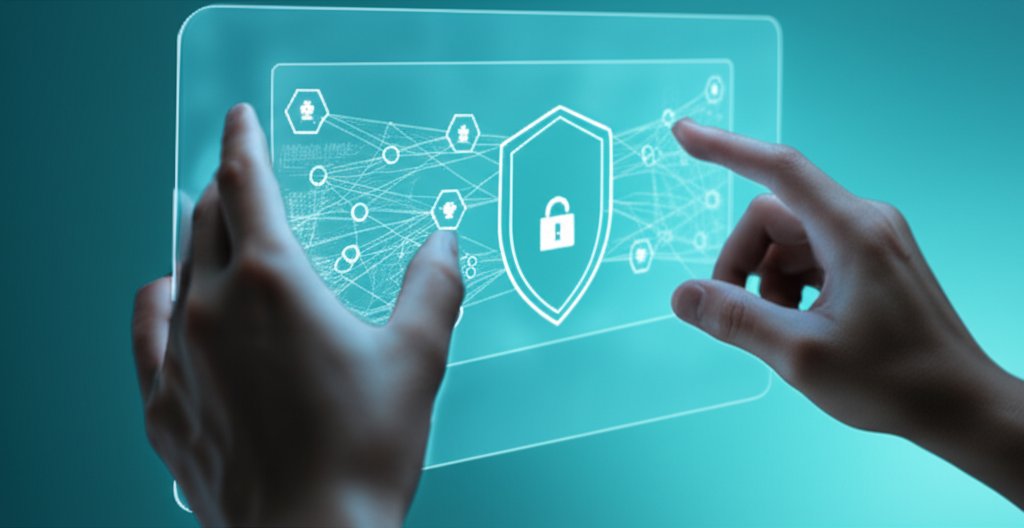Welcome, fellow digital navigators! I’m here today as your guide through the ever-evolving landscape of online identity and privacy. If you’ve ever felt like your personal data is scattered across the internet, vulnerable to breaches, and used without your full consent, then it’s time to talk about something incredibly powerful: Decentralized Identity (DID). This isn’t just a technical concept; it’s a practical solution to help you truly control your digital footprint and take back what’s yours.
I know, “decentralized identity” sounds a bit technical, doesn’t it? But trust me, the core idea is simple and empowering. We’ll break it down into understandable risks and practical solutions, giving you the tools to secure your digital self. No alarm bells, just clear, actionable advice to make your online life safer and more private.
Why This Matters to You: Real-World Control Today
Before we dive into the details, let’s highlight some immediate, tangible benefits of a decentralized approach to your identity. Imagine a world where you could:
- Log in without passwords: Access online services with a quick, secure tap on your phone, using your digital identity wallet, eliminating the risks of weak or stolen passwords.
- Prove your age without revealing your birthdate: When a website needs to verify you’re over 18, you simply present a digital credential that confirms “Age > 18” – no need to share your name, address, or exact birthdate. Your privacy remains intact.
- Control what data is shared, precisely: Instead of filling out lengthy forms with redundant information, you share only the absolute minimum required for any interaction. Your identity isn’t stored by countless third parties, significantly reducing your exposure to data breaches.
These aren’t futuristic fantasies; they’re the practical advantages Decentralized Identity offers, empowering you to secure your information and streamline your online interactions right now.
What You’ll Learn
In this comprehensive tutorial, we’re going to demystify Decentralized Identity (DID) and equip you with the knowledge to actively manage your online presence. You’ll discover:
- What Decentralized Identity (DID) is and how it fundamentally differs from traditional, centralized identity systems.
- The core components of DID: how Decentralized Identifiers (DIDs), Verifiable Credentials (VCs), and your digital wallet work together.
- Why DID is a game-changer for your privacy and security, offering true ownership and control of your personal data.
- How to understand and manage your existing digital footprint effectively.
- Practical, step-by-step instructions to secure your DID and minimize your online trail.
- Tailored advice for small businesses looking to enhance their digital security posture and build customer trust.
Prerequisites
You don’t need to be a blockchain expert or a cybersecurity guru to follow along. This guide is built for everyday internet users and small businesses. Here’s what you’ll need:
- Basic Internet Savvy: An understanding of how to navigate websites, use apps, and manage online accounts.
- A Desire for More Privacy: The willingness to learn and implement new strategies for protecting your personal data.
- An Open Mind: Decentralized concepts can be a bit different from what you’re used to, but we’ll explain them clearly and practically.
That’s it! No special software to install just yet, just your attention and a readiness to empower your digital life.
Time Estimate & Difficulty Level
- Difficulty Level: Beginner
- Estimated Time: 25-35 minutes (for reading and understanding the concepts; actual implementation will be ongoing as you integrate these strategies).
Step-by-Step Instructions
Step 1: The Fragmented Reality: Understanding Traditional Digital Identity’s Risks
Before we dive into solutions, let’s briefly look at why Decentralized Identity is so important. Right now, your digital identity is fragmented and largely controlled by central entities. This creates inherent risks that we often overlook:
-
Your Data is Everywhere: Consider your typical online interactions:
- You log into social media, and that company stores your identity data.
- You apply for a loan online, and the bank collects your financial and personal details.
- You verify your age for an online service, and they often store proof of your birthdate.
-
The “Honeypot” Problem: Each of these companies becomes a tempting target for hackers. They collect and store vast amounts of your personal information, creating irresistible “honeypots” of data. If just one of these central databases gets breached, your data is exposed. You also don’t truly own this data; you’re just granting permission for others to hold it. This centralized model creates massive vulnerabilities and a distinct lack of user control, leaving you exposed and reactive to breaches.
Step 2: Reclaiming Control: Introducing Decentralized Identity (DID)
Now, let’s flip the script. Decentralized Identity changes who’s in charge. Instead of companies or governments owning your identity, you do. It’s often called Self-Sovereign Identity (SSI) because you become the sovereign controller of your data.
-
The Core Principle: User Ownership: With DID, you generate and own unique identifiers, and you decide what information to share, with whom, and when. You’re not relying on a central authority to verify you; your identity is cryptographically secured and self-attested or verified by trusted parties, with the proof held by you.
-
A Digital Wallet for Your Life: Think of it like this: Instead of carrying multiple physical cards (driver’s license, loyalty cards, professional certifications) and having each organization keep a copy of your personal details, you’ll have one secure digital wallet. This wallet holds digital, tamper-proof versions of these credentials. You then simply present the specific pieces of information needed for any given interaction, and nothing more. This minimizes exposure and puts you squarely in control.
Step 3: The Building Blocks of Your Digital Self: DIDs, VCs, and Your Wallet
Let’s break down the foundational elements that make DID work. Don’t worry, we’ll keep it straightforward.
-
Decentralized Identifiers (DIDs): Your Unique Digital Handle.
- Imagine a DID as a permanent, globally unique username or handle that only you control. It’s not tied to any company or database; it lives on a public ledger (like a blockchain) or similar distributed system.
- When you create a DID, you get a special cryptographic key pair (a public key and a private key). Your DID points to a “DID Document” which contains your public key and information about how you can be communicated with or verified.
- The power here is that no central party can revoke your DID or take it away. It’s yours, forever.
-
Verifiable Credentials (VCs): Digital Proofs You Control.
- VCs are like digitally signed, tamper-proof versions of your physical documents (e.g., a driver’s license, a university diploma, a professional certification, a membership card, or proof of employment).
- They’re issued by trusted organizations (e.g., your university issues a VC for your degree; your government issues one for your age).
- Crucially, you store these VCs securely in your digital wallet, and you present them selectively. For example, if a website needs to verify you’re over 18, you can present a VC that simply states “over 18” without revealing your exact birthdate, address, or name. This is called “selective disclosure” and often leverages advanced cryptographic techniques like “zero-knowledge proofs” to share minimal data.
- Because they’re cryptographically secured, VCs cannot be tampered with or faked.
-
Your Digital Wallet: The Command Center for Your Identity.
- This isn’t just for cryptocurrencies, though it might be built on similar technology. Your digital identity wallet is a secure app (on your phone, computer, or a browser extension) where you store and manage your DIDs and VCs.
- It’s your personal control center. You use it to receive VCs from issuers, present them to services that need verification, and securely manage the private keys that authenticate your DIDs.
-
The Role of Blockchain (Simply Put):
- While not always strictly a blockchain, DIDs often leverage distributed ledger technology (DLT) like blockchain as a secure, transparent, and tamper-proof backbone.
- The DLT primarily stores the public DIDs and their associated DID Documents, ensuring they’re globally resolvable and immutable. It’s vital to understand: it is not storing your personal data; just the public pointers and cryptographic keys that allow for secure verification. Your personal data remains with you.
Code Example (Conceptual DID Document – Simplified JSON structure):
{
"@context": "https://www.w3.org/ns/did/v1", "id": "did:example:123456789abcdefghi", "verificationMethod": [ { "id": "did:example:123456789abcdefghi#keys-1", "type": "Ed25519VerificationKey2018", "controller": "did:example:123456789abcdefghi", "publicKeyBase58": "H3C2AVvLMv6gmMNam3uVAjZpfkcJCwDwnZn6zKeg3rHX" } ], "authentication": [ "did:example:123456789abcdefghi#keys-1" ], "service": [ { "id": "did:example:123456789abcdefghi#website", "type": "ServiceEndpoint", "serviceEndpoint": "https://example.com/my-profile" } ] }
This simplified JSON illustrates how a DID document publicly links your DID to a public key for verification and potential service endpoints, without exposing any sensitive personal information.
Step 4: The Power of DID: Unlocking Enhanced Security and Privacy
So, why go through all this? Because the benefits are significant, not just for individuals but for small businesses too. Embracing DID means:
- True Ownership of Your Data: You become the primary guardian of your information. You decide what to share, with whom, and when. No more data brokering behind your back or feeling helpless when companies misuse your data.
- Enhanced Security Against Breaches: Since your sensitive data isn’t sitting in a central database for every service you use, there’s no single “honeypot” for hackers to target. If a service you use gets breached, your DID and VCs remain secure, as they hold no sensitive personal data themselves. This shifts the risk away from you.
- Simplified & Secure Logins: Imagine logging in to services with a quick scan from your digital wallet, instantly proving who you are without usernames, passwords, or the risk of phishing. That’s the promise of DID-enabled authentication – more convenient and inherently more secure.
- Robust Fraud Prevention: Cryptographically secure VCs make impersonation and identity fraud significantly harder. It’s much tougher to fake a digital credential that requires cryptographic proof than to forge a scanned document or simply steal a password.
Step 5: Your Digital Shadow: Understanding Your Online Footprint
While DID is a powerful tool, it’s part of a larger strategy for digital security. You also need to understand your existing digital footprint.
-
Defining Your Footprint: Your digital footprint is the trail of data you leave behind from your online activity. It includes everything from your social media posts to your online purchases, your search history, and even location data from your devices.
-
Active vs. Passive Footprints:
- Active Footprint: This is what you knowingly share. Examples include posting a photo on social media, sending an email, or filling out an online form.
- Passive Footprint: This is what’s collected without your explicit knowledge. Examples include websites tracking your browsing habits, apps sharing your location data in the background, or advertisers building profiles based on your clicks and viewed content.
-
Recognizing the Risks of an Untamed Footprint: A large, uncontrolled digital footprint significantly increases your risk of:
- Identity theft and fraud.
- Targeted (and sometimes manipulative) advertising.
- Reputational damage (from old posts resurfacing unexpectedly).
- Cybercriminals exploiting your shared data for phishing attacks or social engineering schemes.
Step 6: DID as Your Digital Guard: Managing Your Footprint with Precision
This is where Decentralized Identity truly shines as a tool for proactive footprint management.
-
Selective Disclosure in Action: Your Information, Your Terms: This is the superpower of DID. Instead of sharing your full driver’s license to prove your age (which reveals your birthdate, address, and license number), you can simply present a Verifiable Credential that cryptographically proves “Age > 18” or “Age > 21.” This drastically minimizes the data shared and stored by third parties, shrinking your exposure immediately.
-
Portability: Your Identity Moves With You, Securely: Imagine needing to verify your identity for a new online service. Instead of re-uploading documents or re-entering data into yet another database, you simply present a pre-verified VC from your wallet. This eliminates redundant data collection across different platforms and reduces the number of places your sensitive data resides.
-
Minimizing Third-Party Data Hoarding: By using DIDs and VCs, you reduce the need for countless companies to hold copies of your sensitive information. Your data stays with you, in your wallet, and you only share what’s absolutely necessary. This significantly shrinks your passive digital footprint, as fewer entities have data to track or sell.
Pro Tip: Think of DID as a highly sophisticated, customizable digital bouncer for your personal information. You decide who gets in, and you control precisely what they’re allowed to see once they’re inside. Nothing more, nothing less.
Step 7: Actionable Security: Practical Steps for Individuals
Let’s get practical. Here’s what you can do today to leverage DID principles and manage your digital footprint effectively.
-
Choose a Reputable Digital Identity Wallet: Research and select a trusted DID wallet. These come as mobile apps, browser extensions, or even hardware devices. Look for wallets with strong security features, clear privacy policies, and a good reputation in the community. Examples might include wallets from companies like Trinsic, Serto, or various open-source projects. Action: Download and set up your chosen wallet today, ensuring you understand how to securely back up your recovery phrase/seed – this is critical!
-
Master Your Privacy Settings: Regularly review and adjust privacy settings on all your social media accounts, apps, and websites. Turn off location sharing, limit ad tracking, and restrict who can see your posts. Action: Dedicate an hour this week to auditing privacy settings on your three most-used online services.
-
Delete Unused Accounts & Digital Clutter: Every old account is a potential data breach waiting to happen. If you don’t use it, delete it. This directly shrinks your attack surface. Action: Search for “delete [service name] account” for any platforms you no longer need, and start removing them.
-
Be Mindful of What You Share: Think before you post. Personal details, photos (especially of children), and location data can all be used against you by malicious actors or even for profiling. Action: Adopt a “less is more” philosophy when sharing publicly online; if it’s not essential, keep it private.
-
Implement Strong Traditional Cybersecurity Basics: DID enhances security, but foundational cybersecurity remains crucial.
- Strong, Unique Passwords: Use a password manager to create and store complex, unique passwords for every account.
- Multi-Factor Authentication (MFA): Enable MFA everywhere it’s available. This is your strongest defense against stolen passwords.
- Use a VPN: A Virtual Private Network encrypts your internet connection, especially useful on public Wi-Fi, adding an extra layer of privacy.
- Keep Software Updated: Updates often include critical security patches. Enable automatic updates if possible to close vulnerabilities.
Action: Review your current practices and commit to improving at least one of these areas this week.
Step 8: Fortifying Your Business: A DID Strategy for Small Businesses
Small businesses have unique needs, and adopting DID principles can offer significant advantages in security, compliance, and customer trust.
-
Educate Employees on Digital Footprint Awareness and Safe Data Handling: Your employees’ personal digital footprints can inadvertently expose your business to risks. Train them on the importance of personal privacy, strong password hygiene, and cautious online sharing. Action: Conduct a brief internal workshop or share curated resources on digital privacy best practices with your team.
-
Audit and Minimize Data Storage on Third-Party Platforms: Review all third-party services your business uses (CRM, HR platforms, marketing tools). What customer and employee data are you storing there? Can it be reduced or anonymized? Action: Create an inventory of all data stored externally and identify immediate opportunities to minimize unnecessary data collection and retention.
-
Implement Secure Data Deletion Policies: When a customer leaves or an employee departs, ensure their data is securely and thoroughly deleted according to policy and legal requirements. Lingering data is a liability. Action: Document and regularly review your data retention and deletion protocols, ensuring they are robust and followed consistently.
-
Evaluate Third-Party Service Privacy Policies (and Embrace DID-Enabled Services): Understand exactly how your vendors handle data. Prioritize services that offer strong privacy protections and, increasingly, those that support DID for authentication and credential exchange. This signals a commitment to future-proof security. Action: When evaluating new tools or renewing contracts, add “DID compatibility” and “minimal data collection by default” to your vendor checklist.
Pro Tip: Embracing DID principles not only protects your business from data breach risks but also builds invaluable trust with your customers by demonstrating your proactive commitment to their privacy and data security. It’s a competitive advantage.
Expected Final Result
By following these steps, you won’t just understand Decentralized Identity; you’ll begin to actively implement its principles in your digital life and, if applicable, within your business. You’ll gain a clearer picture of your online data, a robust strategy for reducing your digital footprint, and the foundational knowledge to embrace DID as it becomes more widespread. Ultimately, you’ll feel more in control, more secure, and more empowered online – ready for the decentralized future.
Troubleshooting: Navigating Common DID Concerns
It’s normal to have questions or face challenges when exploring new technologies. Here are some common concerns and practical solutions:
-
“This all sounds too complicated/technical!”
- Solution: Start small. Focus on one aspect at a time. Maybe just download a reputable DID wallet and try to understand its basic functions. Or begin by deleting old, unused accounts. You don’t have to overhaul your entire digital life in one go. Patience is key, and every small step increases your security.
-
“I can’t find many services that use DID yet.”
- Solution: You’re right, widespread adoption is still growing, but it’s accelerating rapidly. The goal of this guide is to prepare you for the future and, crucially, to apply the *principles* of DID to manage your current digital footprint. Continue to manage your privacy settings and data sharing, knowing that the tools for true self-sovereignty are emerging and you’ll be ready when they’re mainstream.
-
“What if I lose my digital wallet or its recovery phrase?”
- Solution: This is critical. Losing your private keys or recovery phrase for your DID wallet is like losing your physical wallet, keys, and passport all at once. Ensure you have a secure, offline backup of your recovery phrase, ideally in multiple safe, private locations. Never store it digitally where it could be hacked or compromised. Treat it with the utmost care.
-
“I’m worried about phishing attacks targeting my DID wallet.”
- Solution: Just like cryptocurrency wallets, DID wallets require vigilance. Always verify the authenticity of any website or app asking you to connect your wallet or provide credentials. Be wary of suspicious links and unsolicited requests. Education and cautious behavior remain your best defense against social engineering tactics.
What You’ve Accomplished Today
Today, we’ve journeyed through the intricate world of digital identity, uncovering the vulnerabilities of traditional systems and embracing the promise of Decentralized Identity. You’ve learned about DIDs, VCs, and digital wallets, and how these components empower you with true data ownership and enhanced security. Crucially, we connected DID to the broader concept of your digital footprint, showing how this new paradigm allows for selective disclosure and reduced data hoarding, giving you unprecedented control over your online presence.
Your Next Steps on the Decentralized Path
The future is decentralized, and you’re now at the forefront! Here’s what you can do next to continue empowering your digital life:
- Explore DID Providers: Research different DID wallet providers and decentralized identity platforms. See which ones align best with your needs and values for managing your digital self.
- Keep Learning: Stay informed about developments in the DID space. Organizations like the Decentralized Identity Foundation (DIF) and the W3C are setting standards that will shape the future.
- Advocate for Privacy: Encourage the services you use to adopt DID standards and prioritize user privacy. Your voice matters in shaping a more secure and private digital world.
- Deep Dive into Specific Tools: Once you’re comfortable with the concepts, look into specific DID-enabled apps or services that are starting to emerge.
Ready to try it yourself and see the difference? Take one of the practical steps outlined in Step 7 or 8 today and begin your journey towards greater digital control. Follow us for more tutorials on navigating the digital world with confidence and control.









